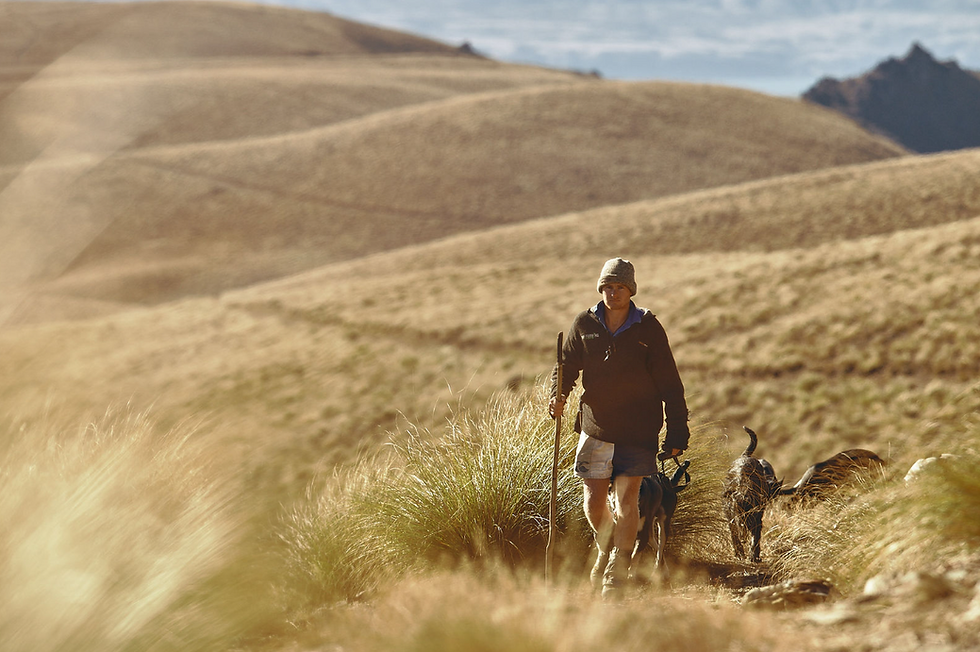Legacy lives on in every muster
- ZQ Natural Fibre

- Aug 7
- 2 min read
Updated: Aug 22
The Autumn Muster has been an important date in the high-country calendar for well over 150 years in New Zealand. As the seasons change, thousands of Merino sheep are guided down from alpine pastures to lower ground. It’s a week-long journey across vast, open country.

Back in the 19th century, when Scottish shepherds first farmed these hills, the muster was done on foot or horseback, with dogs at their sides. And that’s exactly how it’s still done today at Omarama Station.
Not because the shepherds don’t have access to cars, quad bikes or helicopters. But because, despite all the advancements in technology that make farming faster and easier, some traditions became just that for very good reasons. The muster simply works best when it’s done the way it always has been.
Omarama Station is owned and run by Annabelle and Richard Subtil. It’s been in the family for generations, and over that time, shepherds have learned that the best way to move Merinos isn’t fast or forceful, but gently and patiently.
“Sheep don’t do well under pressure,” says Annabelle. “If you just let them walk, they’ll walk all day. But if you push them too hard, they’ll stop.” That’s why the team avoids machines. They rely on dogs, horses and human intuition. “It’s still the best way to do it,” she says.
Richard agrees. “The best shepherds know how to encourage a sheep to do what it already wants to do. You’re using psychology more than power. It’s more of a conversation than an argument.”
Does sticking with these practices make the job more time-consuming? Yes. But it’s worth it. Not just because it works, but because these traditional methods are at the heart of ZQ: respect for the wellbeing of the animals and the land that give us our precious fibre.
So the legacy lives on. The muster still begins before dawn. Riders saddle up in the dark and the anticipation is palpable. Everyone agrees that the muster is as much fun now as it’s always been. Especially for the youngest shepherds.

This year, a Growing Future Farmers student named Jack Boon joined the muster. He doesn’t have his own dogs yet, but he brought a set of bagpipes to join in the morning bark-up (a friendly signal to the flock that they’ll soon be on the move). Jack climbed a ridge and played as the sun rose, his music echoing through the valleys. A nod to the muster’s Scottish roots. And a reminder that legacy isn’t just inherited, it’s carried forward.




